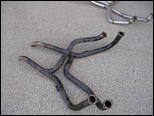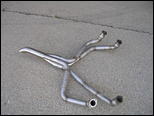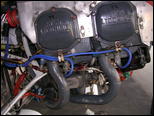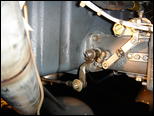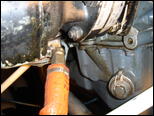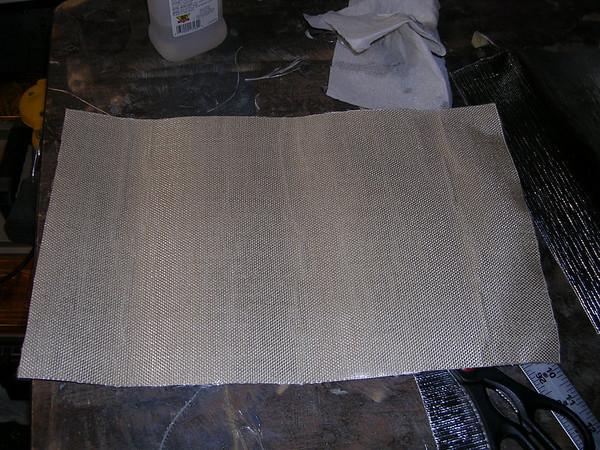All better!
Last week I finally got the new exhaust system in, after getting the new intake pipes in, after changing... Well, you guys know the drill. I test flew it Wednesday night for 20 minutes and everything seemed good. Came back to the hanger, felt around the cowl and found some pretty warm or almost hot spots, then removed the cowl to inspect everything.
The new intake and exhaust both were fine. I knew some delamination of the lower cowling had taken place through the years, and it was a little worse after this flight so I took it home for repair. I cut away the damaged interior skin, feathered the good skin out, and laid up some BID using West Systems epoxy with the slow cure hardner (206?). Used some peel ply to soak up any excess resin. The next afternoon I pulled the peel ply up, sanded the surface a little, and everything looked great.
I was concerned about heat damage to the new fiberglass so stopped at a hot rod shop Thursday and bought some heat barrier. I'll get the name and stock number and add it to the posting later. It is basically a thin layer of insulation with a shiny side and a sticky side. I cut it to fit the cooling air outlet ramp, and stuck it in place.
Saturday morning I went to Oshkosh (by car) but Sunday checked all the nuts and bolts on intake and exhaust, then put the cowling back on and went flying. Took performance numbers at 8500 feet and 7500 feet. I need to convert to density altitude but it looks like I picked up a few knots with the AWI 4 into 1 exhaust. I also tried the cabin heat, and got a huge blast of very hot air when I opened the air box. That should make flying this winter or at higher altitudes a whole lot more comfortable.
I flew for about an hour, landed, taxied in and then checked the cowl temperature by hand after shutting down. The area where I had put the insulation was barely warm, while areas to either side were hot but not uncomfortably hot. I will probably buy another 12 x 24" piece of the stuff and add a little more inside the lower cowl where the individual pipes come down from the cylinders. I also reached up inside the cowling after everything was cool. The reflective insulation was still stuck down tightly into place, and as far as I could feel the repaired areas withstood the heat and vibration of the flight.
All in all this was a good project that unfortunately took up 1 month of the flying season, but I now have a real cool looking exhaust and great cabin heat, which was the original reason to do this modification.
I'll post pictures tonight along with the name of the insulation material.
